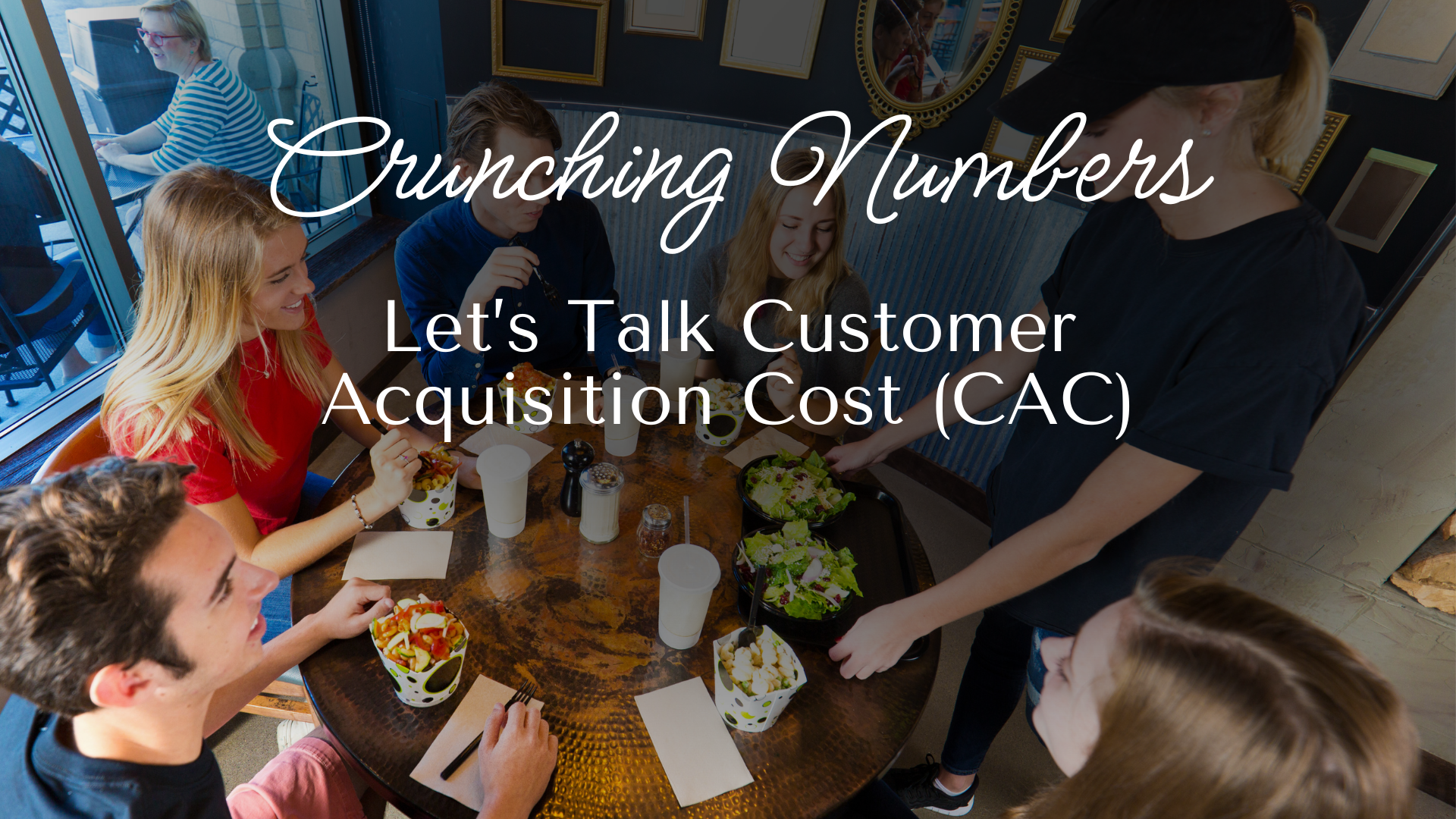Because knowing what it takes to get guests in the door is half the battle.
Hey there, restaurant pros and food biz dreamers—
Let’s face it—running a restaurant today is about more than just good food and great service. It’s about making sure every marketing dollar works as hard as you do. One of the smartest ways to do that? Getting a clear picture of your Customer Acquisition Cost, or CAC.
Put simply, CAC tells you how much you’re spending to bring in each new customer. And when you start tracking it regularly, it’s like pulling back the curtain on your marketing—it shows you exactly what’s working (and what’s just eating up your budget).
🍝 What Exactly Is CAC?
Customer Acquisition Cost is the total cost of your marketing and advertising efforts, divided by the number of new customers you gained during that time.
Here’s the basic formula:
CAC = Total Marketing Spend ÷ Number of New Customers Acquired
Simple math, but the story it tells? Invaluable.
It applies to your whole business or individual campaigns. Want to know how much you’re spending per guest across your entire restaurant? Easy. Curious how effective your Yelp promo or that local foodie event was? CAC can tell you that, too.
🔍 A Real-Life Restaurant Example
Let’s say over the past month you ran two campaigns: one through Yelp discounts and another using a reservation app like OpenTable.com
- $3,000 in OpenTable fees
- $1,500 on Yelp ads and promos
- 2,500 customers served
- Spend per Head: $40
- Total sales: $100,000
At the restaurant level, your CAC is:
($3,000 + $1,500) ÷ 2,500 = $1.80 per customer
Not bad! But now let’s dig deeper. The OpenTable campaign alone drove $10,000 in sales.
$10,000 ÷ $40 per head = 250 customers from OpenTable
$3,000 ÷ 250 = CAC of ~$12 for The OpenTable Campaign
Suddenly, that CAC starts to look less tasty than your Yelp spend, especially if Yelp brought in more guests for fewer dollars.
💡 Why This Matters (Big Time)
If your CAC is too high, you’re spending more to get customers than they’re spending at your place—which isn’t sustainable.
By comparing CAC to other metrics like:
- Spend per Head
- Customer Lifetime Value (CLV)
- Repeat Visit Rates
…you can make smarter, data-backed decisions. Want to focus on channels that bring in repeat customers with lower acquisition costs? CAC helps you see that clearly.
👨🍳 Pro Tips for Keeping CAC in Check
Here are a few practical ways to bring your CAC down while boosting your impact:
- Track Every Channel Separately
Don’t lump Facebook, Yelp, and Google Ads together. Separate them so you can compare CAC across platforms. - Use Referral or Loyalty Programs
These often have a much lower CAC than paid advertising. A free dessert for a referral? Way cheaper than a $25 ad click. - Focus on High-ROI Promotions
Not all discounts are created equal. Look at which ones actually bring in full-paying, repeat guests—not just one-time diners chasing deals. - Invest in Local Partnerships
Collaborations with nearby businesses or events can bring in new faces without draining your ad budget. - Retarget and Reuse
Retargeting ads for past visitors or email campaigns to your subscriber list usually cost less and convert higher.
🍽️ Bottom Line
CAC isn’t just another number—it’s a window into your restaurant’s marketing health. Whether you’re running a cozy café or a bustling bakery, knowing how much it costs to get someone in the door can help you spend smarter and grow stronger.
And if you’re tired of flying blind with your marketing budget—or just want to understand your numbers without the headache—we’d love to help.
📞 Book a free call with us at Delightful Digits and let’s chat about how to make your marketing dollars stretch further and your guest list grow longer.
We’re here to make sense of the numbers so you can get back to what you love—serving up great food and unforgettable experiences.








Leave a Reply